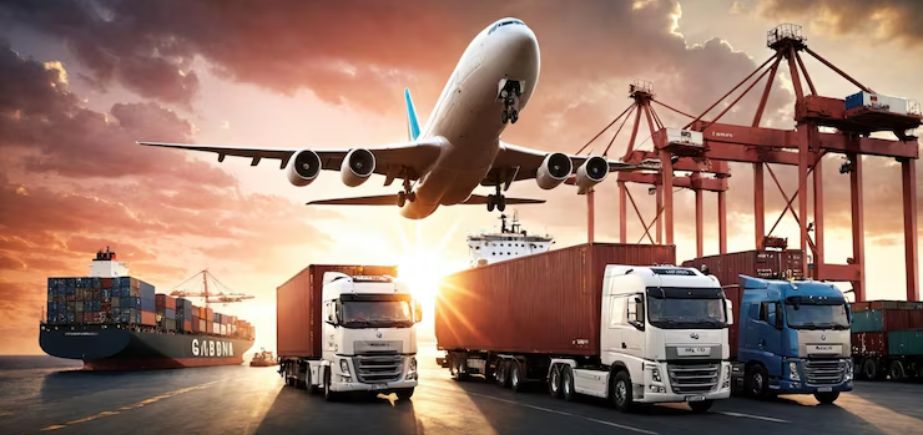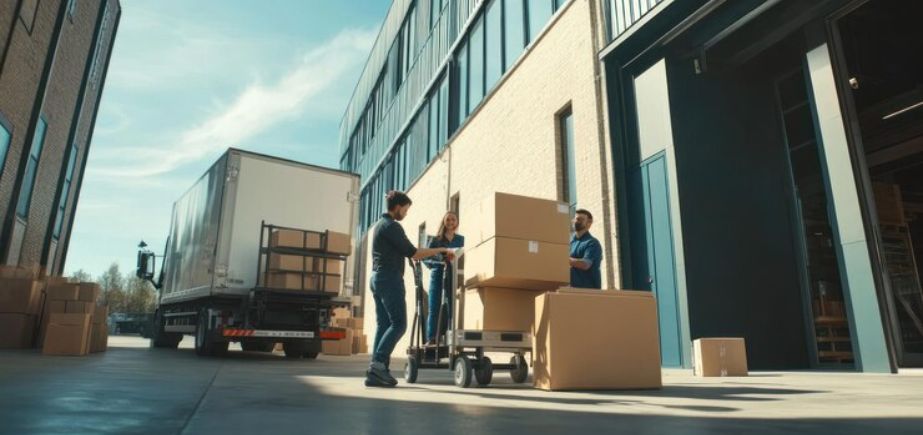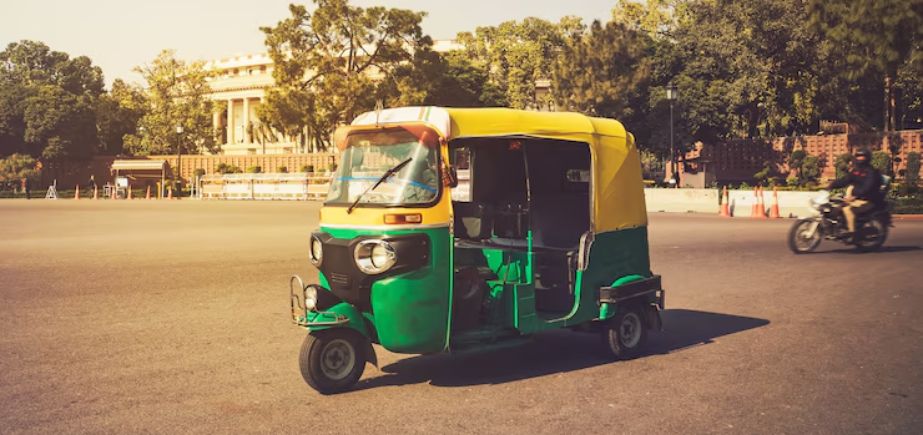Have you taken a moment to see just how much things are always moving throughout the world? Whether it’s the van outside your home, the cabs in the city, or farmers on the road, transport is what keeps our economy running. And here’s what makes it exciting: you don’t need to be a large company to use it. A solid business concept can help you get involved in the busy transportation sector and build a business that earns a steady income.
This blog is an impactful guide to plan and set up profitable transport business ideas, along with an outline to help you set up a successful transport business venture. You’ll learn what puts this industry ahead and what business models you can use to benefit the most, along with tips for your success. planning to make a new choice for your future? Let’s roll!
What Are Profitable Transport Business Ideas?
Best business ideas involving vehicles and easy to describe as a successful transport business if it moves people, goods, or services, and makes more than it spends. You might think it’s simple enough. However, it’s not just that. Ideas are considered most profitable when people need them often, starting them doesn’t cost too much, and expanding them becomes easy as the company grows. They provide the bulk of logistics, cab rides, and boat transportation for people living near the seas as well.
Transport cannot be used the same way for every purpose. There are several parts of this market and each part has its own opportunities. There are certain ideas such as using delivery bikes, that let you begin with little investment and achieve results quickly. There are also transport services such as cold-chain logistics and freight trucks that cost more to start up but lead to extended contracts and larger profits. Both rickshaw owners and van managers will find the right system here.
Why Choose The Transport Industry As A Business?
Here’s why thousands of entrepreneurs are choosing wheels over desks:
- Consistent Demand
Every day, people and products need to get from one place to another—like groceries and tech devices. Transport is always needed and always in demand. There is no break in this industry, regardless if we are talking about delivery logistics or long-haul freight. - Scalable Investment
Begin your operation by using just one vehicle. When your company becomes more profitable, you may be able to upgrade your fleet. It is up to you how fast or slow you read. Unlike some heavy industry businesses, transportation allows you to change the scale little by little. - Diverse Opportunities
There are many different passenger services, freight deliveries, tourism offerings, and medical logistics. If you’re interested in serving travelers, you can create tour packages that combine local transport with sightseeing and activities. Pick out what fits your skills and area’s tastes, and respond quickly if the market changes. - Low Entry Barrier
It doesn’t require a great deal of special equipment to start. Rent a car and have a valid driver’s license and off you head. With a vehicle, the correct licenses and a GPS-equipped smartphone, you usually don’t need anything else on the job. - Booming Industries Need You
Trade over the internet, moving across borders, and building infrastructure all depend on transportation. Their business relies on your solid work, so the partnership often lasts a long time. - Recurring Revenue
B2B contracts, sticking to set delivery routes, or having subscriptions give me steady income. Fixed delivery, regular business customers, school transport every month, and app ride subscriptions are some examples. - Government Schemes & Subsidies
Authorities are supporting the use of logistics and green transport. In particular, governments are aiding businesses in electric vehicles and rural logistics by giving them financial aid.
Top 10 Profitable Transport Business Ideas
1. Freight and Logistics Transport

Freight and logistics transport deals with the bulk transportation of goods inside and between different cities, regions, and countries. Freight services are used by retail, manufacturing, agriculture, and construction companies to transfer both raw materials and finished products. As an industry, logistics demands efficiency, dependability, and operates on a large scale. Freight transport not only happens in the home country but also internationally and can be done by road, rail, sea, or air logistics.
Operational Guidelines:
- Maintain timely pickups and deliveries to retain contracts.
- For efficiency, make use of GPS monitoring and route optimization software. Integrate digital signage for logistics enabled by AIScreen to keep both drivers and warehouse teams aligned on operations.
- Verify adherence to labor, insurance, and transportation regulations.
What’s Involved:
- Fleet of commercial trucks and drivers.
- Fuel and maintenance management systems.
- Warehousing (optional) and tracking infrastructure.
Getting Started:
- Register as a logistics provider and get commercial vehicle permits.
- Scale gradually, starting with a small number of trucks.
- Partner with manufacturers or wholesalers for steady demand.
2. Taxi or Ride-Hailing Services

Since people in cities look for quick, dependable transport, the taxi or ride-hailing business fits well there. Thanks to Uber and Ola, you have the option to add your vehicle or build a brand specializing in on-demand cabs. Taxi services handle airport transfers, corporate rides, and can be used in medical emergencies. Though the market is crowded, serving well and focusing on your location can attract customers who come back. It is largely successful in places where many tourists and business people live.
Operational Guidelines:
- Maintain vehicle cleanliness and comfort.
- Train drivers in customer service and safety.
- Monitor ride quality and punctuality via customer feedback.
What’s Involved:
- A properly licensed SUV, sedan, or hatchback.
- Smartphone with app connectivity or dispatch software.
- Fuel, insurance, and periodic maintenance.
Getting Started:
- Register with ride-hailing platforms or build your app.
- Complete vehicle fitness and commercial permit requirements.
- Offer promotions to attract early customers.
3. Bike Delivery Services (Last-Mile Delivery)

From a warehouse or store, last-mile delivery brings items directly to the customers’ doorsteps. Food delivery, e-commerce, and pharmacy ordering have led to more use of this top profitable transport business model. Starting a bike delivery service is inexpensive, simple to run, and doesn’t need much supporting infrastructure. Whether your company relies on deliveries or does the deliveries itself, a great focus is given to fast, timely, and accurate deliveries. You can start cycling on your own, and when your client list grows, you can bring in other bikers to help.
Operational Guidelines:
- Ensure timely and error-free deliveries.
- Partner with reliable vendors or delivery platforms.
- To save gasoline and time, use route optimization.
What’s Involved:
- Delivery bikes or scooters.
- Order tracking software or app access.
- Uniform and delivery bags for branding.
Getting Started:
- Obtain delivery insurance and a license for commercial two-wheelers.
- Join platforms like Swiggy, Zomato, or Amazon Flex.
- Build vendor relationships for independent contracts.
4. School and Office Van Services

Companies and parents are always prepared to spend more to assure safety, on-time delivery and reliability. With 10- to 20-seat vans, it’s possible to serve neighborhoods and gradually build your service. Extra services, like tracking by GPS, air conditioning or installed CCTV help to increase the faith people have in a car and make the cost higher. Building good relationships with the area makes people feel comfortable and safe. You may rent out your car on weekends or holidays for short rentals or local trips.
Operational Guidelines:
- Verify the safety features of the car and the background checks of the drivers.
- Maintain strict schedules and reliable pick-up/drop services.
- Offer GPS tracking and communication for transparency.
What’s Involved:
- Passenger vans (10–20 seats) with permits.
- Fixed monthly subscription model.
- Daily route planning and fuel tracking.
Getting Started:
- Contact local schools or businesses for contracts.
- Advertise in residential colonies or business parks.
- Hire trustworthy drivers and route managers.
5. Bike or Scooter Rental Business

Serving college towns, places visited by tourists, or major cities, customers may rent vehicles at any time, whether for one hour, one day, or one week. Taking care of a scooter is less effort and less costly than having a car. Thanks to digital bookings, real-time tracking using GPS, and affordable prices, this business works well for customers and is easy to grow. Many businesses also let students or working professionals buy access through a subscription. Taking care of a scooter is less effort and less costly than having a car. Thanks to digital bookings, real-time tracking using GPS, and affordable prices, the Bike Rental Business works well for customers and is easy to grow.
Operational Guidelines:
- Maintain bikes regularly for safety and performance.
- Monitor vehicle use through GPS tracking.
- Provide helmets and follow traffic safety laws.
What’s Involved:
- A fleet of scooters/bikes with branding.
- App or web-based booking system.
- Parking/storage and maintenance space.
Getting Started:
- Apply for commercial permits and vehicle registration.
- Launch a user-friendly mobile app or tie up with platforms.
- Promote locally near hostels, hotels, and campuses.
Suggested Read: Business Ideas in Textile Industry
6. Goods Transport for Farmers

There are difficulties experienced by rural and semi-urban farmers in shipping produce to buyers. Getting a profitable transport business that matches what farmers require can solve this urgent challenge. During harvest season and at markets, this company does well, regardless of whether it’s running a mini truck or a tractor trolley. The business strengthens the community, welcomes returning customers, and delivers good income each season. A part of what entrepreneurs do is to bring small-scale farmers together, making deliveries more efficient by transporting products in greater quantities at once.
Operational Guidelines:
- Coordinate with farmers and mandis for demand cycles.
- Plan routes to save fuel and maximize trips per day.
- Provide options for loading/unloading or refrigeration (if needed).
What’s Involved:
- Mini trucks or utility vans.
- Fixed-route schedules based on market days.
- Awareness of crop cycles and logistics.
Getting Started:
- Reach out to village panchayats and cooperatives.
- Offer flexible pricing and bulk discounts.
- Ensure vehicle ruggedness and rural road readiness.
7. Packers and Movers Business

Because of city life and often changing jobs, people rely heavily on packing and moving services. Many individual users and businesses rely on these companies to move with minimal effort. The services include loading and unloading, packing, transporting, and unpacking. To develop a successful company, combine attractive deals with great customer service. Long moves make for large amounts of business. You may also choose to add vehicle transportation and storage in your warehouse to attract more customers.
Operational Guidelines:
- Train staff on professional packing and fragile item handling.
- Ensure vehicles are suitable for furniture and bulk transport.
- Use clear contracts and insurance for customer trust.
What’s Involved:
- Trucks, packing materials, and a trained crew.
- CRM and scheduling software.
- Optional storage space or warehousing.
Getting Started:
- Register with relocation marketplaces like JustDial, UrbanClap.
- Advertise locally in cities with high migration.
- Build a trustworthy team for packing and logistics.
8. Cold Chain Transport Services

The term cold chain logistics depends on bringing medicines, dairy, meat products, or flowers to market in a cold environment. It calls for insulated trucks or trucks intentionally kept cold. As more people want their orders delivered fresh or frozen, this market is quickly expanding. Among their clients are pharmaceutical firms, restaurants, and firms that export to other countries. Even though the expense at first is greater than other platforms, the extended agreements and premium prices provide significant profits.
Operational Guidelines:
- Monitor temperature conditions 24/7.
- Schedule timely deliveries to maintain freshness.
- Adhere to health and safety guidelines.
What’s Involved:
- Refrigerated trucks or vans.
- IoT devices for temperature tracking.
- Trained staff to handle cold goods.
Getting Started:
- Invest in cold-storage vehicles or retrofit existing ones.
- Partner with hospitals, pharma companies, or F&B outlets.
- Get cold-chain transport certification and insurance.
9. Boat or Ferry Transport

Coastal cities, islands, and river communities all benefit well from water transport. It is possible to run ferry services, operate water taxis, or give tours. Using boats for travel in tourist places is enjoyable as well as practical. Ensuring both proper licensing and safe operations is very important. Boats you can ride are speedboats, houseboats, or traditional-style ferries. Sometimes operated just by seasons, the model is also useful for cargo or remote area transport throughout the year.
Operational Guidelines:
- Ensure regular maintenance and marine safety compliance.
- Offer life jackets, GPS, and emergency measures onboard.
- Match schedules with peak hours or tide timings.
What’s Involved:
- Boats, pontoons, or ferries with capacity-based pricing.
- Crew and guides for customer handling.
- Docking rights and licenses from local authorities.
Getting Started:
- Get maritime and transport permissions.
- Partner with travel agencies or local bodies.
- Advertise through tourism boards or ferry stations.
10. Auto or E-Rickshaw Transport

The wide use of auto rickshaws and electric rickshaws can be seen as the main form of public transport and a profitable transport business in Indian towns and cities. Since e-rickshaws are eco-friendly, they receive financial advantages under many government schemes. You can choose your timing without hassle, and they are less costly than taxis. If you are new to starting a business and want to work in transport on a limited budget, this model is a good choice. In this business, you can receive earnings every day, and in cash, and you may choose to run it part-time.
Operational Guidelines:
- Operate in high-footfall areas like markets or railway stations.
- Keep your vehicle clean and charge-ready.
- Follow municipal rules and get route permissions.
What’s Involved:
- One or more auto/E-rickshaws.
- Battery maintenance and charging setup.
- Driver’s license and commercial registration.
Getting Started:
- Apply for e-rickshaw loan schemes or subsidies.
- Register with a local transport union.
- Use branding and daily deals to attract commuters.
Tips to Build a Profitable Transport Business
- Start Small, Scale Smart – Don’t rush – pick one vehicle, track need, and only develop your offerings when data shows it’s wise. By keeping things smart during scaling, you preserve your financial health and keep business costs low.
- Leverage Technology – Use GPS, apps for fleet tracking and use technology for planning better routes. Using these tools cuts fuel bills, ensures that deliveries are made in good time and improves general output.
- Focus on Customer Service – Getting goods or people from one place to another smoothly is important, but maintaining trust counts most.
- Stay Legally Compliant – Every driver at your company has a valid license, and your company follows the regulations for transport businesses. When you do things correctly, you gain respect and shield your business from issues.
- Track Costs Religiously – Each rupee you save matters as it covers important running costs. When you know your expenses, you can charge money that covers all costs and prevents financial deficiencies.
- Build Corporate Tie-Ups – Partner with corporations to achieve consistent B2B transport contracts. As a result, your work becomes steadier and your earnings are easier to predict which is better than occasional gigs.
- Offer Value-Added Services – Adding storage, helping with packaging, or monitoring shipments can help your business stand out. Such services help you charge more and also guarantee that clients cannot do without your business.
Emerging Trends in the Transport Industry
- Electric Vehicles (EVs) – Electric cars offer cheaper running and the government’s support, so they are expected to dominate, moving forward.
- AI-Powered Fleet Management – Using AI in fleet management support helps predict maintenance needs, better plan routes and reduce periods where vehicles are not available.
- Real-Time GPS Tracking – Don’t lose business by not offering your customers the ability to watch their deliveries as they happen.
- On-Demand Delivery Models – People in urban areas are increasingly renting vehicles by subscription.
- Subscription Rentals – Without contact or app help, you can book tables or make payments easily.
- Contactless Payments and App Bookings – Pay for your ride without using your card or phone; book rides straight from your phone.
- Medical & Emergency Transport – Specialized services for patients, medicines, or critical care are growing.
Conclusion
Getting from one place to another is just part of what transport does—it’s really about looking to the future. Because of eCommerce, new ways people living and expanded global trade, the industry holds much promise. The best part of these top transport business ideas is that getting into real estate doesn’t require having millions.
Starting with just a bike for delivery or a small logistics fleet, the transport business lets you create a business on your scale. When you’re prepared to follow your entrepreneurial dreams, stepping in as the driver is the right move. Find a niche, understand the market, plan your work well, and see your transport business go profitable.
FAQs
Q1. Which transport business is the most profitable?
Freight and cold-chain logistics often have the most profit, but starting them takes a lot of capital. On a small budget, delivery bikes and ride-hailing services let you turn a profit fast.
Q2. Can I start a transport business with a small budget?
Yes! Things like auto-rickshaws, two-wheeler delivery, and vehicle rentals mean you don’t need a lot of capital to begin your business.
Q3. How do I get clients for my transport business?
You should begin by contacting businesses in your area, aim to partner with retailers, schools and offices, as well as post your service offers online.
Q4. What licenses are required to start a transport business?
Usually, you’ll need to get permits for the vehicles, register with the authorities for transport, get driver licenses and insure your fleet. Different locations need different requirements.
Q5. Is technology important in transport businesses?
Absolutely. Efficiency and satisfaction for customers depend on having GPS tracking, managing fleets, using app-based bookings and automatic billing.
